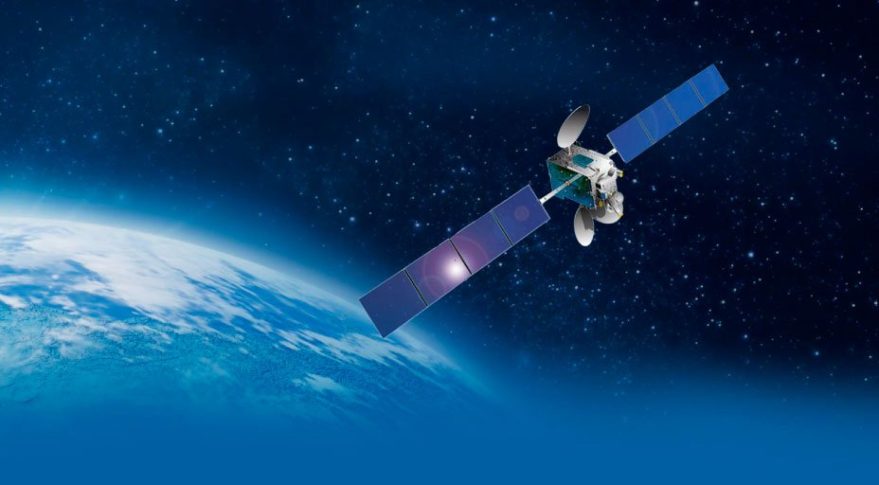AngoSat
AngoSat, based in Angola, was operating the Angosat-1 satellite located at 13° East orbital location. Angosat-1 was designed to be the first national communications spacecraft for the African country of Angola. The project was born out of a 2009 agreement between the governments of Angola and Russia. In part thanks to extensive political, economic and military ties between Russia and Angola dating back to the Soviet period, the Russian firm RKK Energia (RSC Energia) won the contract for the development of the Angosat-1 communications satellite. In the following years both parties carried out a joint work in organization of the project financing, that made it possible to proceed to its practical implementation.
In 2011, Moscow-based banks, including Vneshekonombank, VTB and Roseksimbank, extended a 286 million USD loan to the Angolan Finance Ministry for 13 years to fund the Angosat satellite project. Work on the satellite started in late 2012.
In January 2018 AngoSat-1 exhibited fatal problems with its power supply system soon after launch from the Baikonur space center in Kazakhstan. Contact with the satellite was soon lost and never recovered despite many attempts. In April 2018 Angola government officially declared Angosat-1 satellite a total loss.
AngoSat-1 Spacecraft
With the AngoSat-1 satellite Angola became one of the few sub-Saharan African countries in space; Nigeria, Algeria, Ghana and South Africa already have several satellites in orbit, going further than basic telecommunications.
South Africa uses its spacecraft to collect data on potential environmental disasters such as flooding and fires and Ghana uses the cubesat, a small satellite built by the All Nations University, to monitor its coastline and for educational purposes.
The AngoSat-1 spacecraft was originally supposed to be launched along the Energia 100 satellite on a Zenit-3SL launch vehicle with launch operator Sea Launch in 2016, but political tensions following the annexation of Crimea and Sea Launch legal issues made the use of the Ukrainian launcher uncertain. Finally a Zenit-3F rocket of launch operator ILS was used for launch from Baikonur Cosmodrome on December 26th 2017.
Angola draws large revenue from its oil reserves but suffers extreme inequality. UNICEF calculated that 38% of the nation’s population lives in poverty. At the beginning of the 21st century, the Angolan government embarked on a major effort to revamp the nation’s telecommunications infrastructure and switch local TV channels from analog to digital format. In order to improve and expand communications across all 117 municipalities and to link the nation to the rest of the African continent, the Angolan Ministry of Telecommunications and Informational Technologies planned to launch the first Angolan communications satellite, Angosat-1.
The spacecraft, which was expected to carry up to 40 C- and Ku-band transponders, could be used for all forms of modern communications including TV broadcasts, telephone service, the Internet and secure electronic services for the government. According to the African press, the Angolan government gave high priority to the project, estimated to cost around 300 million USD, despite limited financial resources.
In June 2009, Rosoboroneksport, a Moscow-based entity specialized in sales of Russian defense-related technologies reached an agreement with the Angolan government to build and launch the Angosat-1 satellite. The deal was probably sweetened by the fact that Russian banks had agreed to lend the money for the venture. The actual job of building the spacecraft was delegated to RKK Energia, which had pioneered satellite communications in the USSR in the 1960’s and returned to this line of work in the 1990’s. After preliminary studies, the practical implementation of the project started in December 2012.
RKK Energia based the design of the Angosat satellite on a standard platform, which had previously served as a basis for the Yamal communications satellite series, also built for Russia-based satellite operator Gazprom Space Systems and the military EKS Tundra early-warning spacecraft. By the standards of modern commercial communications satellites, which reach up to six tons in mass, Angosat was a relatively small lightweight spacecraft, 1,647kgs, which was a modest increase resulting from various design changes during the course of the development.
RKK Energia used Russian-made components and the company’s newest virtual reality design center assisted in the development of the satellite, however, the spacecraft’s communications payload was apparently supplied by the European consortium Airbus Defense & Space.
At the end of June 2015, the Angolan Ministry of Communications announced laying the foundation for the satellite control center in Funda, municipality Cacuaco, near Luanda. According to the Interministerial Commission Coordinating the National Space Program, GGPEN, the prime factor for choosing that particular location was the low level of electromagnetic interference in this largely rural area. The center’s communications equipment included a 7.6m ZS SKU flight control antenna and a 4.9m support antenna. The facility also included two power generators, two electric transformers and fuel storage, enabling its operation in case of a power outage. A water-treatment plant located five kilometers away on the Bengo River also supported the center.
The futuristic three-story building of the satellite control center, designed by Moscow-based 2K Engineering Company, was completed by September 2016.
In 2017, the total cost of the Angosat project, including ground infrastructure, was reported to be 327.6 million USD.
The AngoSat-1 satellite finally reached the launch pad in 2017 and was delivered into orbit by a Zenit rocket on December 26th. The satellite exhibited fatal problems with its power supply system practically immediately after entering autonomous flight from the Baikonur space center in Kazakhstan. Contact with the satellite was soon lost and never recovered despite many attempts. In April 2018 Angola government officially declared Angosat-1 satellite a total loss.
The built of the AngoSat-2 has started immediately at no cost to Angola and would be covered with a 121 million USD insurance payment for the loss of Angosat-1 and the rest would be paid by the Russian government. The replacement satellite will have more capacity and be more sophisticated than Angosat-1.
In 2019 the Angolian Government contracted ISS Reshetnev for the construction of AngoSat-2. The payload platform for Angosat-2 will be provided by Airbus Defense & Space in France and the launch is planned for 2021 executed by launch operator ILS.
All trademarks, logos and images mentioned and showed on this page are property of their respective owners.
Resources
www.infrasat.co.ae
www.satnews.com edition April 23rd, 2018
www.russianspaceweb.com
www.space.skyrocket.de
www.aljazeera.com edition April 27th 2017
www.wikipedia.org
www.spaceflight101.com

